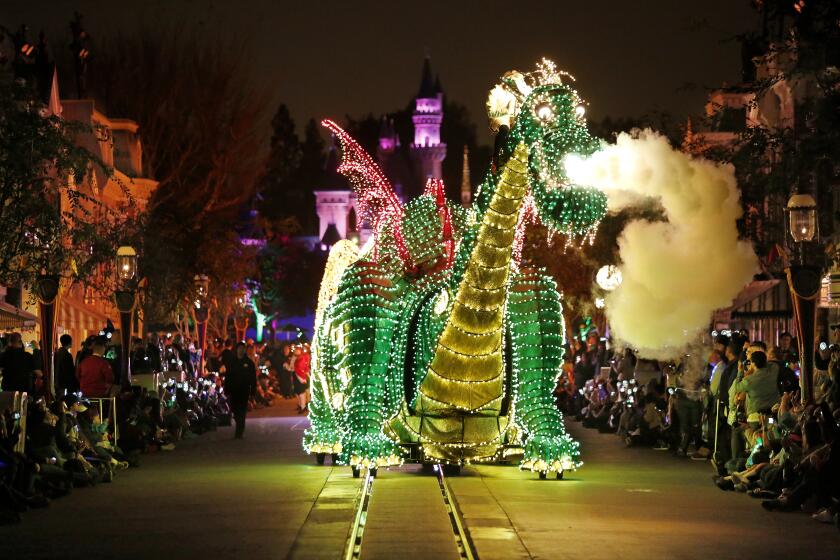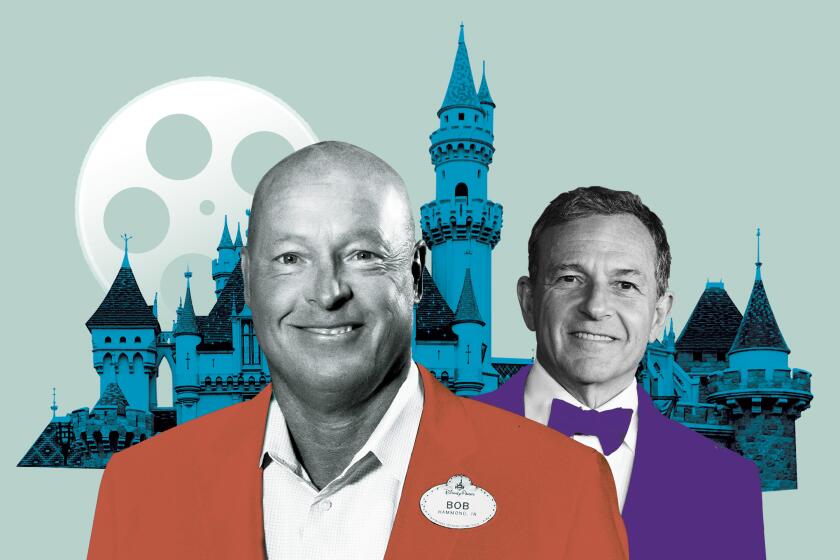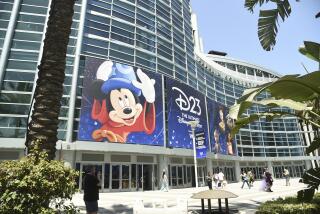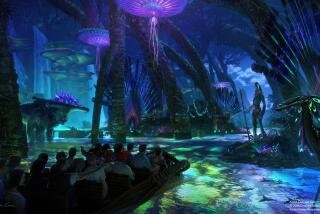A glimpse into Disneyland’s future? Disney may one day project 3-D images for individual guests
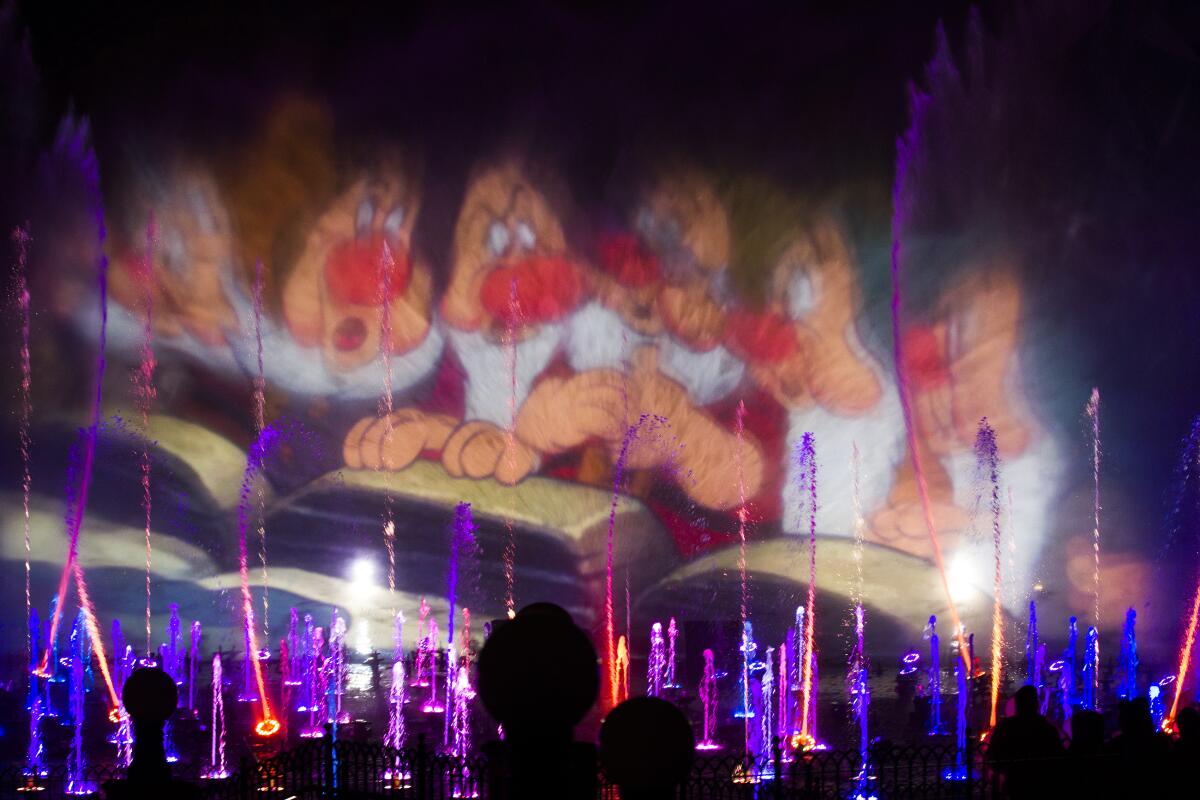
- Share via
Walt Disney Co. has been approved for a patent to project moving 3-D images on real-world objects to interact with theme park visitors, making it easier to create interactive attractions throughout its theme parks.
The U.S. Patent Office approved the patent for Disney Enterprises last month for a technology described as a “Virtual World Simulator.” Disney officials say they have no immediate plans to use the technology.
The Burbank media giant already uses 3-D projectors to cast moving images on sprays of water in the light shows dubbed “World of Color” at Disney California Adventure and “Fantasmic” in Disneyland as well as on buildings and rides during the nightly firework displays on Main Street USA.
The technology described in the patent would not be geared for large audiences but would instead track individual visitors around the parks and project images specifically for them on nearby objects, buildings and walls. Imagine walking by a wall and having Mickey Mouse appear to wave and dance in front of you.
People would not have to wear special goggles or headsets to see the images, according to the patent.
Visitors could be tracked through their smartphones or other devices they are carrying so that the tracking information could be relayed to a computer connected to projection devices located throughout the theme parks. After locating the visitors, the “Virtual World Simulator” could project an image of a Disney character in front of the guests, with hidden speakers providing voices for an immersive experience, according to the patent.
Some favorite rides and traditions at Disneyland and California Adventure Park remain on pause. What’s coming back and when?
Instead of building animatronic characters or hiring actors in costumes to entertain and communicate with guests, Disney could use the technology to interact with guests through 3-D projections, according to experts who have read the patent.
A large-scale version of so-called projection-mapping technology has become popular at theme parks and other entertainment venues. The technology uses lasers to scan the surface of buildings and structures to created a virtual 3-D landscape that is uploaded into a digital server so that the 3-D projectors have the ability to project images on uneven surfaces, such as trees or buildings.
For Disneyland’s 60th anniversary celebration in 2015, the digital wizardry was used to project Disney characters onto the facades of Main Street buildings. At Universal Studios Hollywood, projection-mapping shows up outside Hogwarts in the Wizarding World of Harry Potter and as part of the “Kung Fu Panda: The Emperor’s Quest” attraction.
“What this does is free them up so they no longer have to follow the laws of physics,” said John DeStefano, a technology advisor for Founders Legal, a corporate and intellectual property law firm in Atlanta.
A Disney spokesperson said the company “files hundreds of patents each year as we explore developing technologies.”
“We are excited about the possibilities related to this type of technology,” the Disney spokesperson said, adding that “there are no current plans to introduce this technology into an upcoming experience.”
For nearly two years, Bob Iger and Bob Chapek have run the company together. After an Iger farewell tour, one Bob remains.
In 2016, Disney took out a patent on a device that would take images of visitors’ shoes to gather data and help customize visits. The patent describes a machine that snaps photos of visitors’ feet as they enter a theme park and matches the photos with demographic information given voluntarily, such as name, age or hometown.
Later in the park, another camera aimed at shoe level could identify a person at a ride or eatery based on the earlier foot photo, according to the patent. Disney has yet to launch what the patent described as a “system and method using foot recognition to create a customized guest experience.”
Patent experts point out that companies sometimes take out a patent simply to keep competitors from using the same technology.
“It’s possible that they may never use it, but my sense is this is very much something they are going to commercialize,” said Ed Khalili, a patent attorney with Founders Legal.
More to Read
Inside the business of entertainment
The Wide Shot brings you news, analysis and insights on everything from streaming wars to production — and what it all means for the future.
You may occasionally receive promotional content from the Los Angeles Times.
